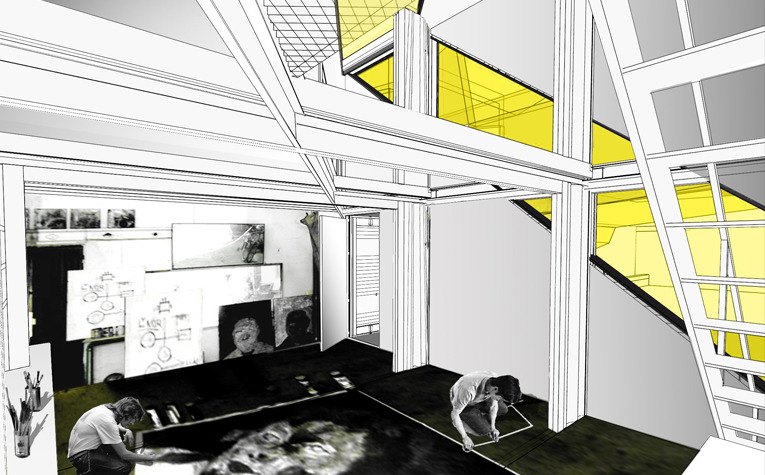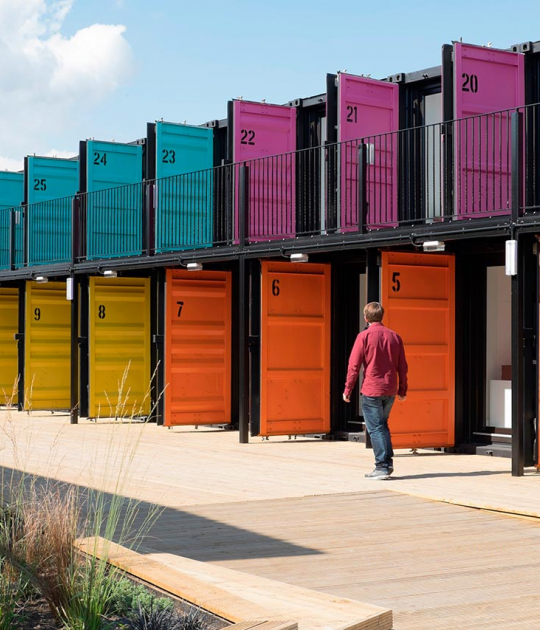Known as the Whitney Studio, it will stay there until the museum moves to its new home in Manhattan’s meatpacking district in 2015. The design is singular — a 600-square-foot space composed of six black-painted shipping containers that form a 17-foot-tall studio space and storage mezzanine.
Known as the Whitney Studio, it will stay there until the museum moves to its new home in Manhattan’s meatpacking district in 2015. The design is singular — a 600-square-foot space composed of six black-painted shipping containers that form a 17-foot-tall studio space and storage mezzanine — and the idea is perhaps the most tangible example of what museum education is about these days.
The concept employs 6 shipping containers stacked on two levels to form a concise, minimalist cube. The Whitney Studio is specifically designed to fit the smaller area of the Whitney’s open moat, on the south side of the entry bridge. A diagonal and continuous band of fenestration runs along two sides and along the roof to provide natural light and offers a glimpse of activities to museum visitors. Operable windows allow for transfer of airflow when in use (as a supplement to HVAC). Inside, the studio offers a double height space and a triangular mezzanine for the production and display of art work.
 To see an animation of this project, please watch below, the LOT-EK video.
To see an animation of this project, please watch below, the LOT-EK video.
CREDITS
Architects.- LOT-EK Architecture & Design.
Team collaborators.-Ada Tolla, Giuseppe Lignano.
Project manager.- Virginie Stolz.
Structural Consultant.- Robert Silman Associates.
Location.- Madison Av., New York City. USA.
Client.- The Whitney Museum of American Art.
Building Type.- Art Studio/Gallery.
Size.- 720 sf.
Dates.- Design.- 2011 / Completion.- 2012.






































